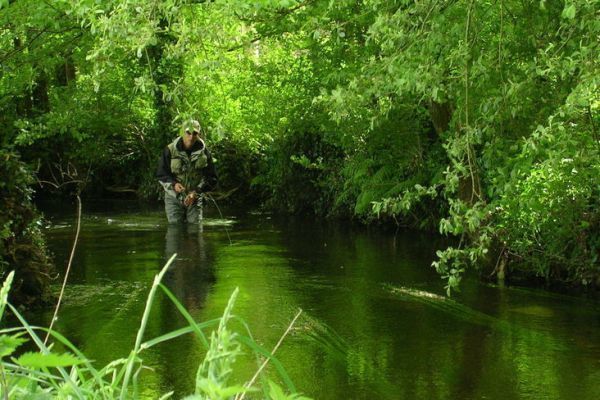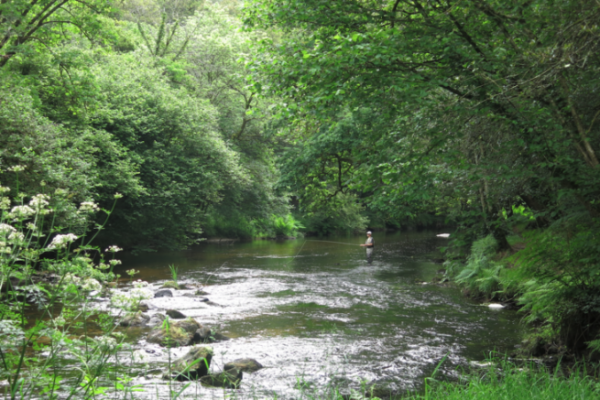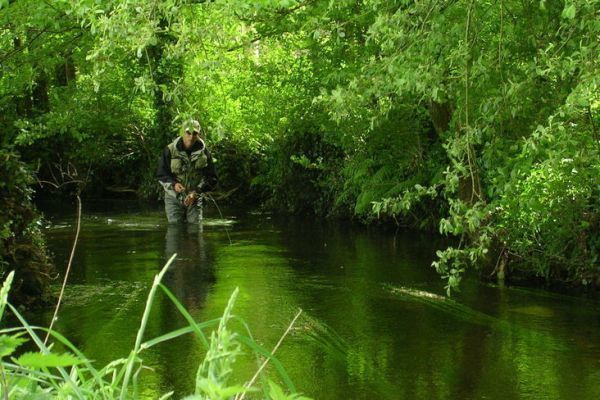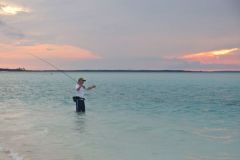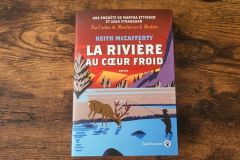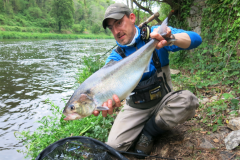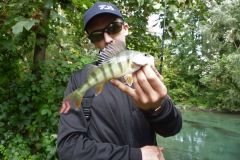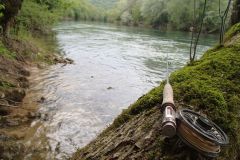The rolling throw, a throw in its own right
The rolled cast is a cast apart. It's another style of casting, but this time the line is anchored in the water (waterborn anchor), without being propelled backwards into the air. It is performed in a single movement. There are no false casts.
The principle consists in forming a loop at the rear of the rod to form a D with the line, called the D loop, which will allow the rod to be loaded a little and then send the line forward without uncoiling it in the air using a (conventional) back cast. The forearm pushes the rod forward, from position 13:00 to 11:00, with gradual acceleration to the locking point. The line gains speed and then lifts off the water to land on the same axis as the anchor at the start (180°).
It can be used for casting and/or fishing in small to medium-sized rivers, or simply in congested areas in rivers, lakes or even exotic waters if you can't unroll your line at the back for lack of space.
The only drawback is that it doesn't allow you to change direction. With a little skill, however, you can move the anchor to vary the casting angle (explained in the video below).
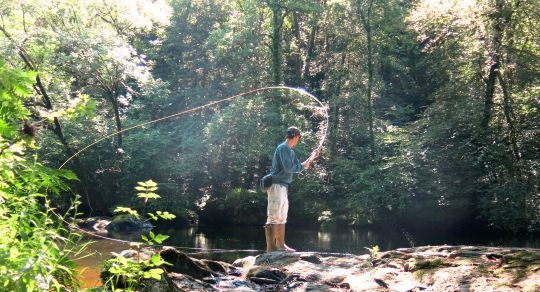
A lesser-used but indispensable throw!
The putt-putt is used for one main reason:
- The obstruction of the river or berth, which prevents the line from being propelled or deployed in the air at the stern
It can be done with a forehand or backhand stroke, or with the rod tilted to one side. The principle remains the same.
It's indispensable for casting in tight places where the line cannot be pulled back because of obstacles (often branches). It does a lot of good and allows you to fish everywhere.
It's possible to cast a certain distance if you've mastered the casting technique, even if that's not the original aim. To gain distance, you can add a front pull (simple pull) or make a larger loop (D Loop) by sending the line backwards to put as little line as possible on the water and therefore also load the rod more (with the weight of the line). The improved rolled cast, with the line detached to form a larger loop, is called the switch cast.
The rolled cast is the basic cast for learning Spey Cast casts, which allow you to change direction and reach greater distances in areas with little clearance.
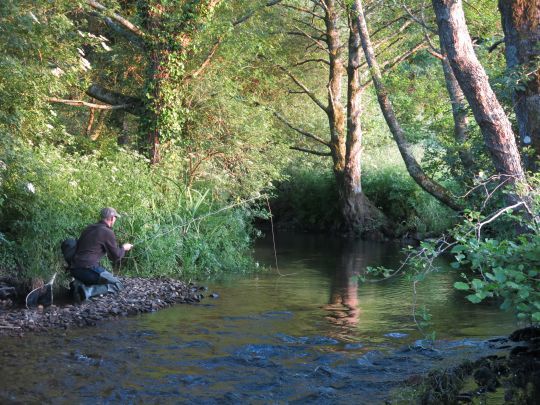
Perfecting your technique
After straight, rolled and backhand casts, which can be used in a wide range of river and lake fishing situations, there's still time to improve and perfect your technique, particularly in terms of ease and distance.
Tractions are added to the front and/or back cast to increase speed and load the rod. These are the single and double pulls, which, once acquired, enable you to gain many metres in distance, as well as passing into the wind. An upcoming video on this subject will also be available on the Orion Fly Fishing You Tube channel.
